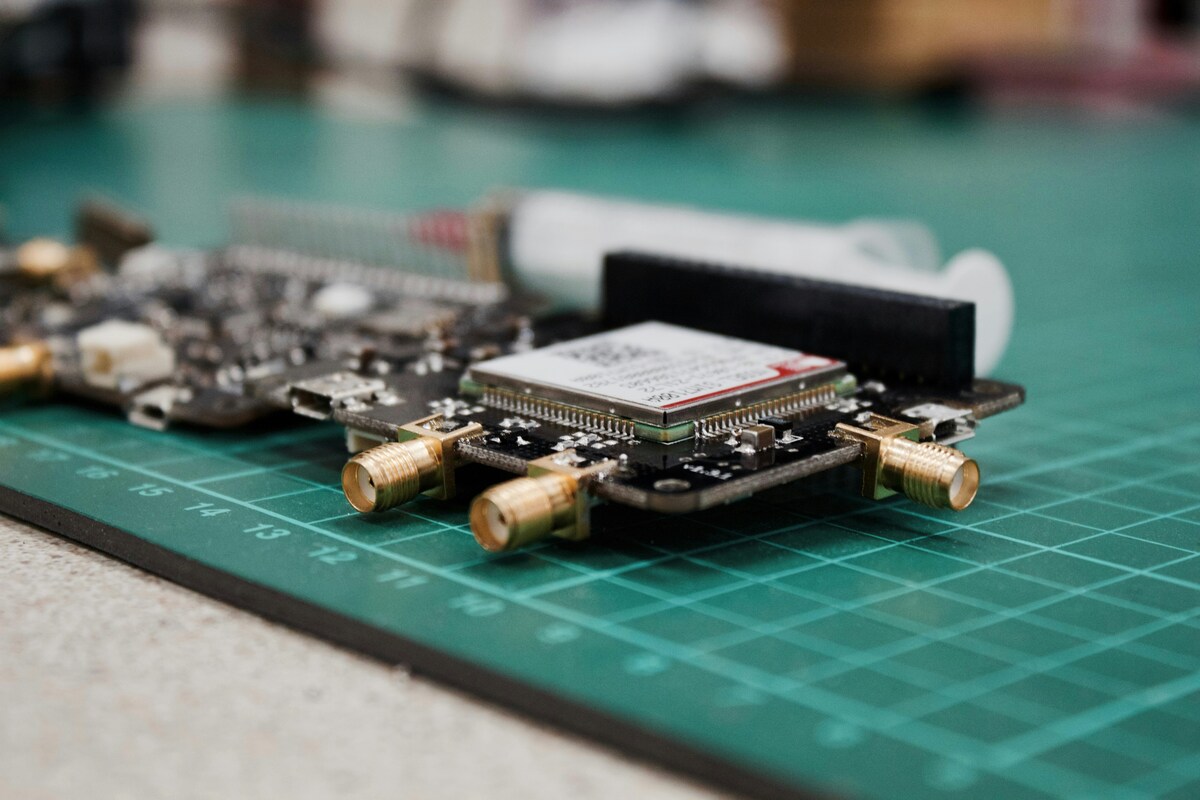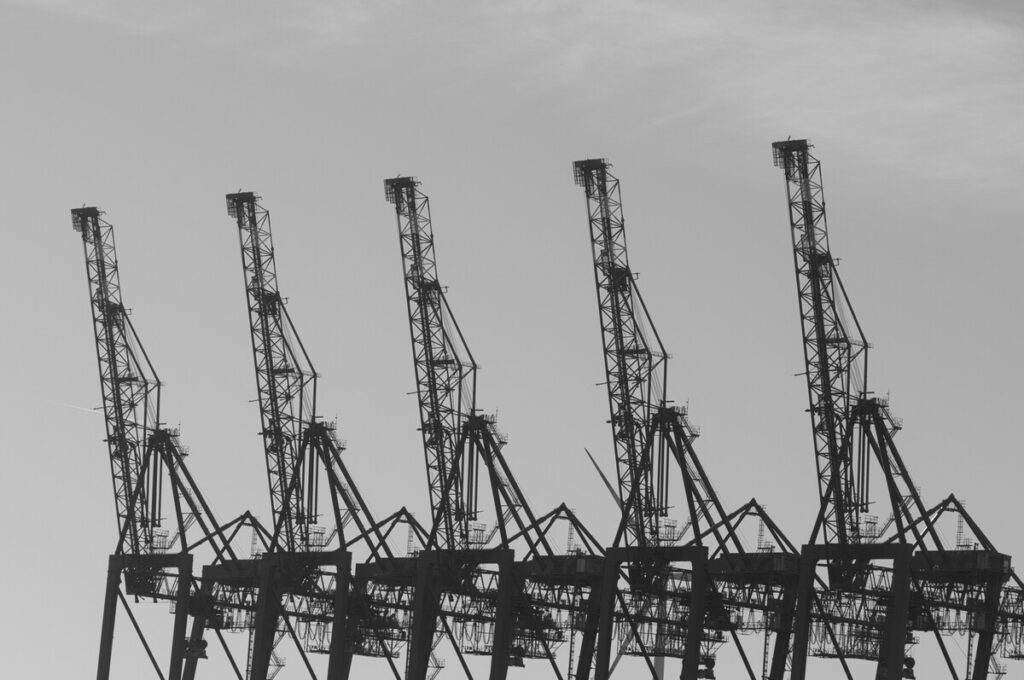In today’s rapidly evolving industrial landscape, the integration of technology has become indispensable for enhancing operational efficiency, productivity, and competitiveness. Among the myriad of technological advancements, the Industrial Internet of Things (IIoT) stands out as a transformative force, empowering organizations to harness the power of connected devices, data analytics, and automation to revolutionize their processes.
According to recent industry reports, the global Industrial IoT market is poised for exponential growth, with projections estimating a compound annual growth rate (CAGR) of over 20% in the coming years. This staggering statistic underscores the increasing adoption of Industrial IoT Tender solutions across various industrial sectors, including manufacturing, energy, transportation, and healthcare.
As organizations strive to capitalize on the opportunities presented by Industrial IoT, the process of tendering for IIoT solutions emerges as a critical enabler, facilitating the acquisition of technology and services tailored to specific industrial needs. Through structured tendering processes, organizations can navigate the complexities of IIoT procurement, ensuring transparency, fairness, and alignment with strategic objectives.
This article aims to delve into the intricacies of Industrial IoT Tender, offering insights into its definition, purpose, key components, process, considerations, and best practices. By understanding the fundamentals of Industrial IoT Tender, organizations can effectively navigate the procurement journey and unlock the full potential of IIoT technologies to drive innovation and growth in industrial operations.
Table of Contents
Understanding IIndustrial IoT Tender
Industrial IoT Tender is a crucial process within the industrial landscape, facilitating the acquisition of technology and services that enable the implementation of IoT solutions tailored to industrial settings. This section delves into the essential aspects of Industrial IoT Tender, elucidating its definition, purpose, and key components.
Suggested article to read: What is IoT Tender? 2024 Guide
Definition of Industrial IoT Tender
Industrial IoT Tender can be defined as the formal process through which organizations solicit proposals from vendors for the supply of IoT solutions and related services specifically tailored to industrial applications. It involves the issuance of a request for proposal (RFP) or invitation to tender (ITT), outlining the requirements, specifications, and evaluation criteria for potential vendors to submit their proposals.
Suggested article to read: Industrial Internet of Things (IIoT) Guide to 2024
Purpose and Objectives of Industrial IoT Tender
The primary purpose of Industrial IoT Tender is to identify and engage with vendors capable of providing IoT solutions that meet the unique needs and challenges of industrial environments. By formalizing the procurement process through tendering, organizations aim to achieve several objectives:
- Identifying Suitable Solutions: Industrial IoT Tender enables organizations to explore a wide range of solutions offered by various vendors, allowing them to select the most suitable option based on their specific requirements.
- Ensuring Transparency and Fairness: The tendering process promotes transparency and fairness by providing all interested vendors with equal opportunities to compete for the contract. This helps in mitigating biases and ensuring that the selection is based on merit.
- Cost-Effectiveness: Through competitive bidding, organizations can negotiate favorable terms and pricing with vendors, ultimately leading to cost-effective procurement of IIoT solutions.
- Quality Assurance: By defining stringent evaluation criteria and requirements in the tender documents, organizations can ensure that the selected vendor delivers high-quality products and services that align with industry standards and best practices.

The Process of Industrial IoT Tender
The process of Industrial IoT Tender involves several stages, each with its own set of activities and considerations. Below is a detailed breakdown of the typical process:
Suggested article to read: 25 Best IoT Conferences and Events to Attend in 2024
Pre-Tender Stage
- Identifying Requirements and Specifications:
- The organization identifies its specific needs and objectives for implementing Industrial IoT Tender solutions.
- This involves assessing current challenges, defining desired outcomes, and determining key functionalities required from the IoT system.
- Researching Potential Suppliers:
- The organization conducts market research to identify potential vendors capable of providing IIoT solutions that meet its requirements.
- This may involve evaluating vendor capabilities, experience, reputation, and track record in delivering similar projects.
- Developing Tender Documents:
- Based on the identified requirements, the organization prepares the tender documents, including the request for proposal (RFP) or invitation to tender (ITT).
- The tender documents outline project scope, technical specifications, evaluation criteria, submission guidelines, and terms and conditions.
Suggested article to read: The Ultimate Guide to IoT Sensor in 2024
Tender Stage
- Issuing the Tender:
- The organization officially issues the tender documents to potential vendors, inviting them to submit their proposals.
- This may involve publishing the tender on relevant platforms, sending it directly to selected vendors, or both, depending on the organization’s procurement policies.
- Evaluation of Proposals:
- Vendors submit their proposals in response to the tender documents within the specified deadline.
- The organization evaluates the proposals based on predefined criteria, which may include technical capabilities, pricing, vendor experience, support services, and compliance with requirements.
- Negotiation and Clarification:
- After the initial evaluation, the organization may enter into negotiations with shortlisted vendors to clarify aspects of their proposals, address any concerns, and refine terms and conditions.
- This stage may involve requesting additional information or revisions from vendors to ensure that their proposals align with the organization’s needs.
Suggested article to read: What is IoT in Construction? Definition, Applications and Steps (2024)
Post-Tender Stage
- Selection of Vendor:
- Following negotiations and clarifications, the organization selects the vendor whose proposal best meets its requirements and offers the most favorable terms.
- The selection process may involve internal review and approval, taking into account input from relevant stakeholders and decision-makers.
- Contract Negotiation:
- The organization enters into contract negotiations with the selected vendor to finalize the terms of the agreement.
- This includes negotiating pricing, service levels, delivery timelines, warranties, liabilities, and any other contractual provisions.
- Implementation Planning:
- Once the contract is finalized, the organization and the vendor collaborate on detailed implementation planning.
- This may involve defining project milestones, allocating resources, establishing communication channels, and developing a project timeline and roadmap.
The process of Industrial IoT Tender requires careful planning, diligent execution, and effective communication between the organization and potential vendors. By following a structured tendering process, organizations can identify and procure IIoT solutions that address their specific needs and objectives, ultimately driving innovation, efficiency, and competitiveness in industrial operations.

Key Considerations in Industrial IoT Tender
In Industrial IoT Tender, several key considerations play a crucial role in ensuring the success of the procurement process and the subsequent implementation of IoT solutions in industrial settings. Here are some essential factors to consider:
- Security and Data Privacy:
- Security is paramount in IIoT systems, given the potential risks associated with cyber threats and data breaches.
- Ensure that the tender documents include robust security requirements, such as encryption, authentication mechanisms, access controls, and intrusion detection/prevention systems.
- Address data privacy concerns by defining policies for data collection, storage, and sharing in compliance with relevant regulations (e.g., GDPR, HIPAA).
- Scalability and Interoperability:
- IIoT solutions should be scalable to accommodate future growth and expansion of industrial operations.
- Specify requirements for scalability in the tender documents, such as support for a large number of devices, flexible architecture, and modular design principles.
- Ensure interoperability with existing systems and devices by defining compatibility standards and protocols (e.g., MQTT, OPC UA) that the IoT solution must adhere to.
- Integration with Existing Systems:
- Consider the integration of IIoT solutions with legacy systems, industrial equipment, and enterprise software platforms.
- Define integration requirements in the tender documents, including APIs, data formats, protocols, and middleware solutions.
- Collaborate with IT and operations teams to ensure seamless integration and interoperability across the entire industrial ecosystem.
- Maintenance and Support:
- Factor in ongoing maintenance and support requirements for IIoT solutions throughout their lifecycle.
- Specify service-level agreements (SLAs) for maintenance, updates, troubleshooting, and technical support in the tender documents.
- Evaluate vendors based on their track record in providing reliable support services and their ability to meet SLA commitments.
- Compliance and Regulatory Requirements:
- Ensure that IIoT solutions comply with industry standards, regulations, and certifications relevant to the industrial sector (e.g., ISO 27001, NIST Cybersecurity Framework).
- Include compliance requirements in the tender documents and request evidence of certifications and adherence to standards from potential vendors.
- Address specific regulatory requirements related to data security, environmental regulations, safety standards, and industry-specific guidelines.
- Total Cost of Ownership (TCO):
- Consider the total cost of ownership over the entire lifecycle of IIoT solutions, including upfront costs, implementation expenses, operational costs, and ongoing maintenance expenses.
- Evaluate vendors based on their TCO projections, taking into account factors such as licensing fees, hardware/software costs, training, and support services.
- Conduct a cost-benefit analysis to assess the long-term value and return on investment (ROI) of different IIoT solutions.
By carefully considering these key factors in Industrial IoT Tender, organizations can effectively evaluate and select vendors that offer solutions tailored to their specific requirements while mitigating risks and ensuring the successful deployment of IoT technologies in industrial environments.

Conclusion
In conclusion, the process of Industrial IoT Tender is instrumental in enabling industrial organizations to harness the transformative potential of IoT technologies tailored to their specific needs and challenges. By formalizing the procurement process through tendering, organizations can identify, evaluate, and select vendors capable of delivering high-quality IIoT solutions that drive innovation, efficiency, and competitiveness in industrial operations.
Through a structured approach encompassing pre-tender, tender, and post-tender stages, organizations can effectively navigate the complexities of IIoT procurement, from identifying requirements and researching potential suppliers to evaluating proposals, negotiating contracts, and planning implementation. Key considerations such as security, scalability, interoperability, integration, maintenance, compliance, and total cost of ownership are critical in ensuring the success and sustainability of IIoT initiatives.
By prioritizing transparency, fairness, and value-driven decision-making, organizations can foster collaborative partnerships with vendors, mitigate risks, and maximize the long-term benefits of IIoT investments. Ultimately, strategic Industrial IoT Tender practices enable organizations to leverage cutting-edge technologies, optimize operational processes, and unlock new opportunities for growth and innovation in the ever-evolving industrial landscape.
Suggested article for reading:
What is GDPR in Wearable IoT? Safeguarding Privacy in 2024
IoT in Insurance; 2024 Review
IoT in Railway; Comprehensive Guide 2024
Resources:
Firsttender | Tender Detail | Tenders OnTime | Tender News | Primetenders
For all the pictures: Freepik




